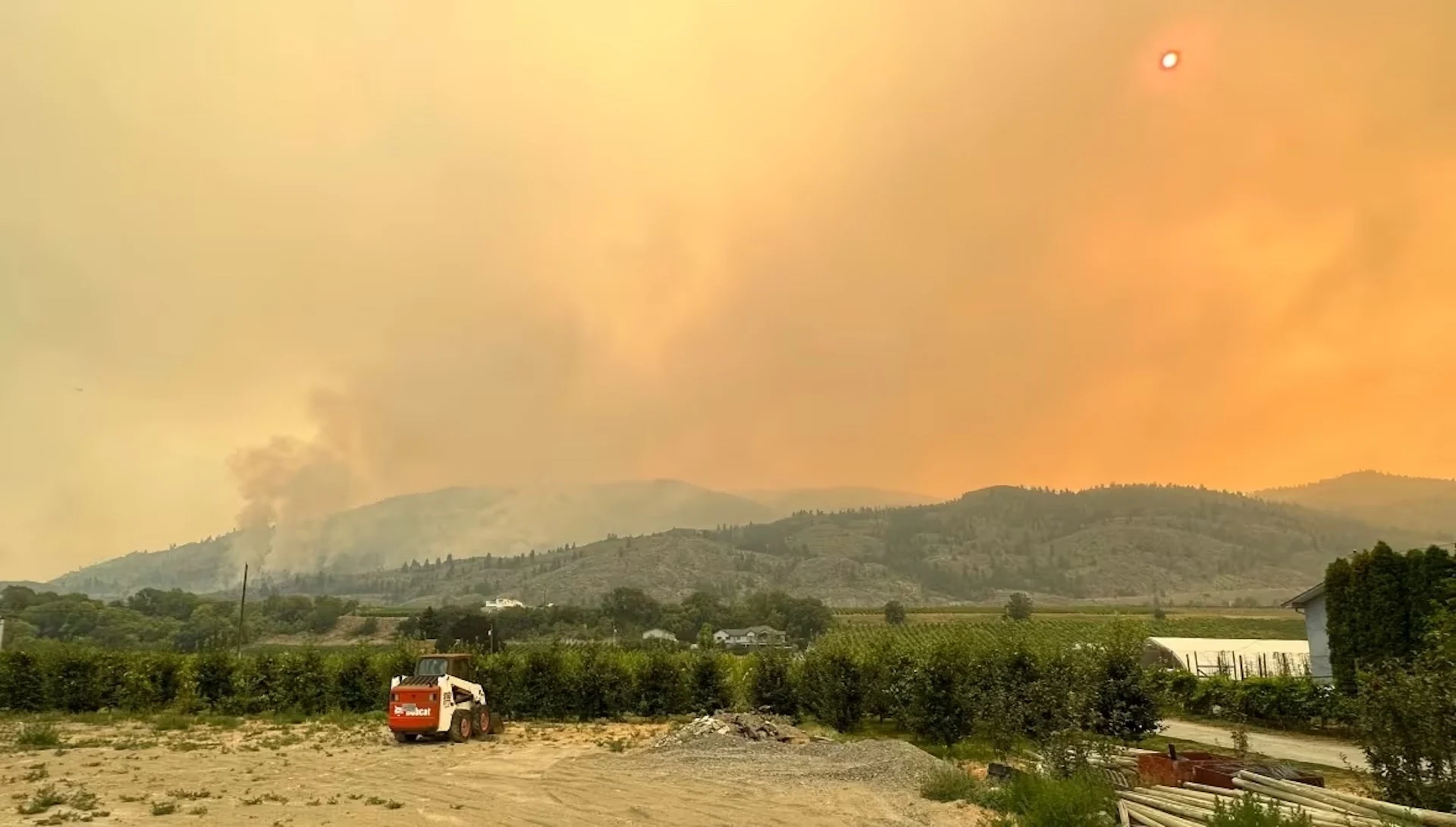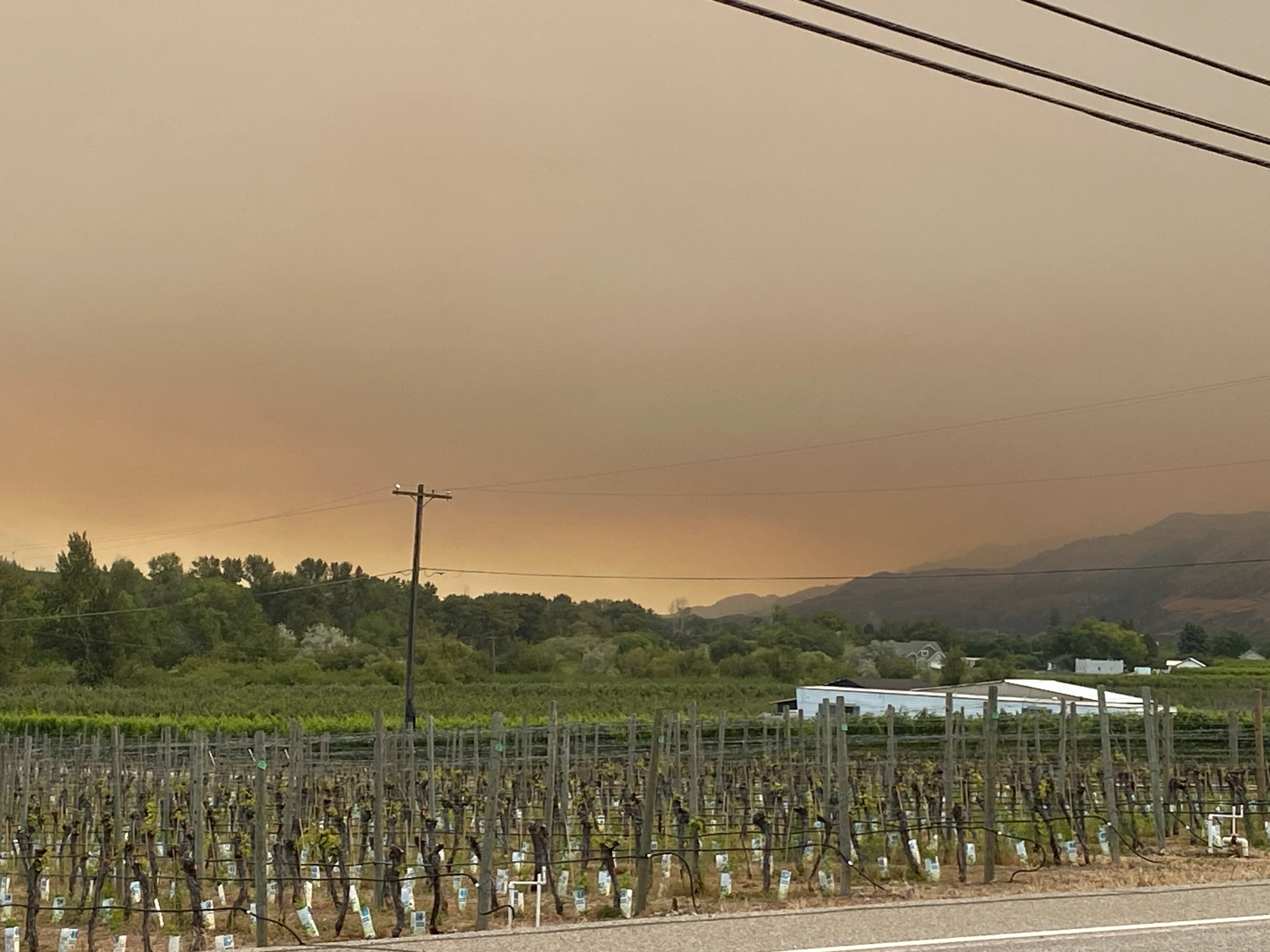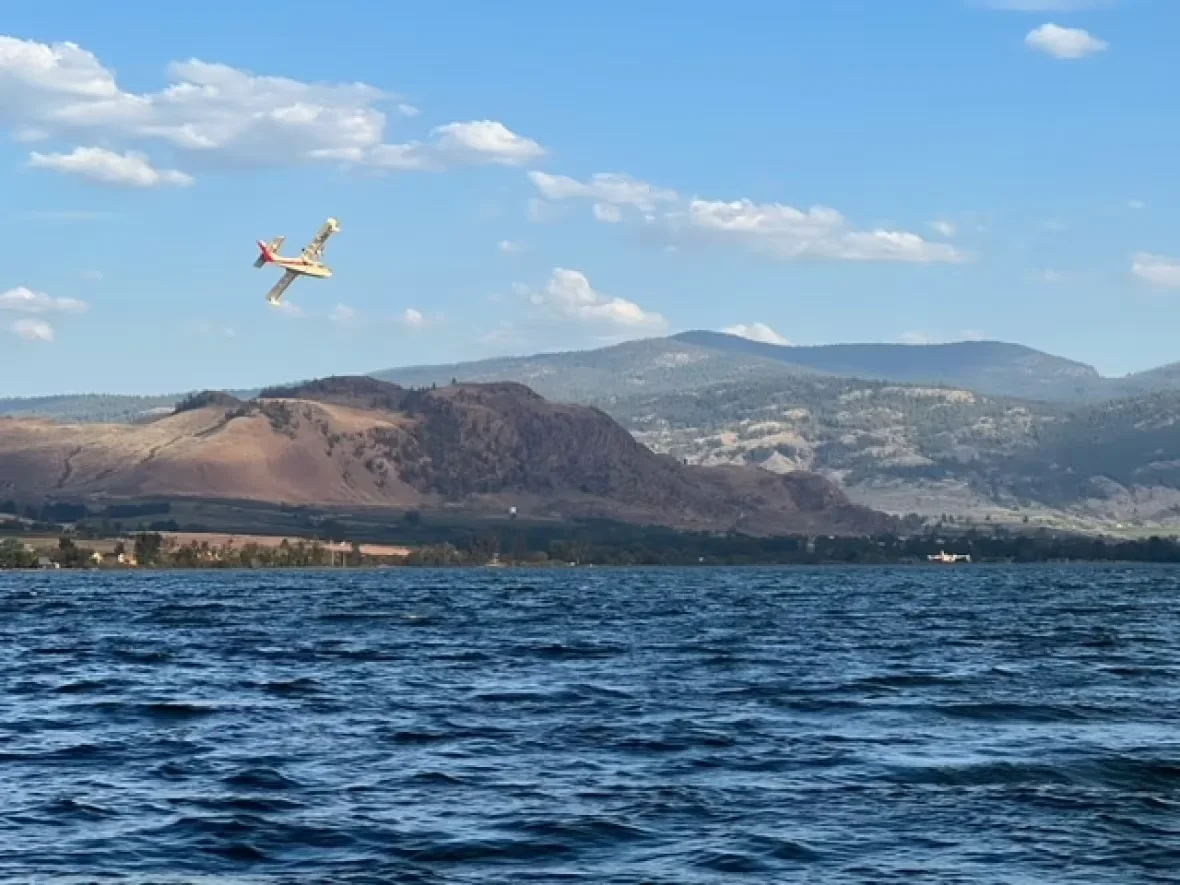
Some relief as evacuation order reduced for wildfire burning near Osoyoos, B.C.
Visit The Weather Network's wildfire hub to keep up with the latest on the active wildfire season across Canada.
Hundreds of people are being allowed to return to their homes in Osoyoos in southern British Columbia after winds pushed back a wildfire that threatened the town over the weekend.
The town endured a terrifying night on Saturday after the Eagle Bluff fire crossed the border with the United States and surged over hills overlooking Osoyoos.
However, Environment Canada is forecasting winds of up to 20 kilometres an hour blowing northwest throughout the day — the right direction to push the flames away from town.
The sky over Osoyoos was visibly clearer Monday morning, closer to its usual shade of blue after it was an eerie shade of smoky orange on Sunday.
Erick Thompson of the Regional District of Okanagan Similkameen said Monday afternoon during a scheduled briefing for media and members of the public that there are 192 properties now on evacuation order, down from 732.
But over 2,600 homes are under evacuation alert, and their residents must be ready to leave at short notice.
Thompson stressed the need for people to "remain vigilant and be prepared" as crews continue to focus resources on the eastern flank of the fire, where it is closest to the town.
The fire is currently 14.5 square kilometres on the Canadian side of the border, which is an increase from Sunday when it was reported to be roughly nine square kilometres in size. Winds will likely be a major factor in the battle, but the latest forecast offers some hope.
Winds have been a key factor in the battle to save Osoyoos, with Environment Canada calling for northwest winds through Monday before gusts of 20 kilometres per hour were forecast to ease late in the day.
BCWS Information Officer Shaelee Stearns said crews are keeping a close eye on the situation throughout the day and that 50 firefighters, as well as air support, are working to keep the blaze at bay.
Stearns said Monday that seeing a portion of the evacuation lifted can be considered "good progress."
Osoyoos has a population of about 5,000, but that is swollen in summer by visitors who come to enjoy the town's lake and surroundings.
On Monday, Thompson reminded people with boats to stay off the water to give the aircraft room to work.

(Jaclyn Whittal/The Weather Network)
"If you can, stay off Osoyoos Lake," he said.
The local state of emergency remains in effect. Osoyoos Mayor Suzan McKortoff also reminded residents Monday that water restrictions are still in place.
Wildfire danger rating falls elsewhere
The Eagle Bluff fire is one of more than 350 active blazes in the province, according to the BC Wildfire Service, with just under 200 classified as out of control and 14 ranked as fires of note that are either highly visible or pose potential threats to public safety.
The fight to save Osoyoos came in spite of the wildfire danger rating having fallen sharply in recent weeks because of rain and cooler weather in most areas of B.C., except the southern and southeast corners.

Planes scooped water on the American side of Osoyoos Lake on July 29, 2023 as a wildfire originating in Washington state grew over the border with Canada prompting an evacuation alert for Osoyoos. (Submitted by Helen Bobbitt)
That prompted officials in the Prince George Fire Centre, representing the northeast quarter of the province, to announce plans to lift a campfire ban in that region, but the decision was reversed just a short time later.
"Upon further review and with the wildfire season being experienced in B.C., we have made the decision the Category 1 prohibition will remain in effect,'' the wildfire service said in a social media post on Sunday.
"The decision to implement or rescind a campfire ban is based on science. However, as a high level of activity continues around the province, we want to ensure all wildfire personnel are responding to current and potential naturally caused wildfires,'' the post said.
WATCH: Wildfire approaching Osoyoos, B.C, prompts evacuation order
SEE ALSO: Firefighters rely on support at home to battle blazes across Canada
Meanwhile, a firefighter was killed before the weekend while fighting the massive Donnie Creek fire in northeastern British Columbia — the second such death this month in the province and the fourth in Canada during a record-breaking fire season.
Police said the contract firefighter from Ontario died after his heavy-duty ATV rolled over on a steep gravel road, just weeks after Devyn Gale, 19, was fatally struck by a falling tree near Revelstoke, B.C.
Residents are encouraged to check the RDOS website for updates on changes to evacuation orders and alerts, and the Voyant! Alert app to get emergency notifications.
Thumbnail image courtesy of Zahra Premji/CBC.
This article was written and published by CBC News on July 31, 2023. It contains files from Zahra Premji, Georgie Smyth and The Canadian Press.









